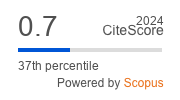Rising Rate of Cesarean Section
Abstract
Cesarean section, which was introduced into clinical practice as a lifesaving procedure for both the mother and the baby, is one of the most common surgeries performed in modern obstetrics. Formerly it was performed in interest of the mother; currently it is frequently done for fetal indication. As other procedures of some complexity, its use follows the health care inequity pattern of the world; underuse in low income setting, and adequate or even unnecessary use in middle and high income setting (1).
The first modern cesarean section was performed by German gynecologist Ferdinand Adolf Kehrer in 1881. Cesarean section is often performed when a vaginal delivery would put the baby's or mother's life or health at risk. Many are also performed upon request (2).
Pregnancy and delivery are considered a normal physiological state in women; however, of all deliveries approximately 10% are considered high risk, some of which may require Cesarean section (3).
The cesarean delivery rate has increased throughout the world. Cesarean rates have increased over the past 40 years from approximately 5% to more than 30% in many industrialized countries (4). The cesarean rate is approximately 21.1% for the most developed regions of the globe, 14.3% for the less developed regions, and 2% for the least developed regions (5).
Recent studies reaffirm earlier recommendations of the world health organization (WHO), about optimal C-section rates, addressing that the best outcomes of mothers and babies appear to occur with C-section rates of 5% to 10%, while rates above 15% seem to do more harm than good (6).
In US the cesarean rate increased dramatically during the 1970s and early 1980s this may be accredited to the improved technology in detecting pre-birth distress, and began to decline in the late 1980s (based on data from the National Hospital Discharge Survey). Between 1989 and 1996 the total cesarean rate decreased as a result of a decrease in the primary rate and an increase in the rate of vaginal birth after Cesarean (VBAC). Since 1996, these trends have reversed, and increases have been rapid and sustained for primary and repeat Cesareans over the past decade (7).
According to the Iraq Multiple Indicator Cluster Survey 2006 (Iraq MICS 2006) (8), about 20% of births were delivered by C-section (Table 1). Moreover, a brief and rapid survey of C-sections in Baghdad Teaching Hospital, a tertiary referral hospital, indicated that the emergency C-sections account only for 62.2% of the total number of C-sections performed outside the working hours during April 2010 (9).













